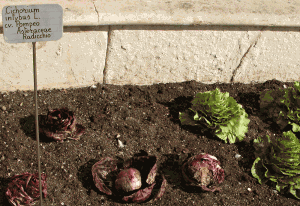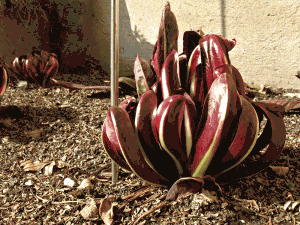- Biogeographic Information System Spatial Ecological Analysis of Megavertebrate Populations. Not agrobiodiversity by any stretch but stunning all the same, and a clarion call to our community to sort out Genebank Database Hell, surely.
- Traditional paddies as ecosystems. Great ones, too.
- Title says “seed banks susceptible to sham samples,” text says not really, and maybe it doesn’t matter much anyway. Our take from a few days ago.
- China’s millet useful in Africa. Which millet? Your guess is as good as mine.
- Cherimoya going seedless.
- Annex 1 list of International Treaty on PGRFA to expand? Well, maybe. Whatever, wow.
- Lecture materials on conservation and use of animal genetic resources.
- The ancient fast foods of Greece.
- Conserving heirloom apples. Nice gig if you can get it.
Potato seeds or seed potatoes
It’s a curse, knowing (and caring) too much. Last week, we dutifully nibbled a Spanish-language report that seeds from Peru’s Potato Park were on their way to the Bóveda Global de Semillas de Svalbard. The BBC, equally dutifully, seems to have retailed the same story. But hang on. Are those true potato seeds, in which case I’ll just relax and go home? Or are they potato seed tubers, capable of safeguarding actual varieties, rather than merely a diverse sample of potato DNA? The BBC certainly suggests the former, by specifically mentioning one of the varieties by name.
I had always thought that named potato varieties do not breed true from true seed. so if seeds are being stored, then why bang on about varieties? And if it is seed potato tubers, which do preserve variety characteristics, why are they being stored at Svalbard, where they’ll die pretty quickly?
Someone put me out of my misery.
A greater curse is the curse of unreliable technology. This post was supposed to magically appear three weeks ago. It didn’t. I don’t know why. And I was on the road at the time. No wonder it evoked no response …
Diversifying Crops May Protect Yields in the Face of a More Variable Climate
That’s the headline on a note from the American Institute of Biological Sciences, which publishes the excellent BioScience. Resilience in Agriculture through Crop Diversification: Adaptive Management for Environmental Change, a review by Brenda Lin of the CSIRO in Australia, pulls together lots of studies 1 from lots of places and lots of species (and varieties) to come to the conclusion that, yes, indeed,
Understanding the potential of increasing diversity within farm systems is essential to helping farmers adapt to greater climate variability of the future. By adopting farm systems that promote ecosystem services for pest and disease control and resilience to climate change variability, farmers are less at risk to production loss and are more generally resilient to environmental change.
Thanks Eve.
Happy International Women’s Day!
Sorry for the slow blogging, but I’m ill in bed and Jeremy is travelling. But none of that will stop us from wishing you all a happy International Women’s Day!
Radicchio diversity
Following in Luigi’s footsteps, the botanic gardens at Padua beckoned. The oldest botanic gardens in the Old World (Wikipedia is wrong; the New has older) they have operated continuously in the same place since 1545. A freezing February day was not ideal to see plants, and precious few of the labels denoted anything directly edible as food. I was not, however, entirely disappointed, for in a sunny bed in the lee of a building was a display of perhaps the region’s most famous crop: radicchio.
The picture above shows an old local variety, Variegato di Castelfranco, and Otello, a modern cultivar. Which, naturally, sent me scurrying to discover more about their history and breeding. There isn’t, actually, a huge amount. One study, of which I’ve seen only the abstract, examined DNA diversity of the five major types. Turns out that if you compare pooled bulk DNA from six individuals of each type, the different types are easy to distinguish. If, on the other hand, you look at DNA from individuals, the distinctions disappear. The variation within a single type is much greater than the variation among the different types. This, the researchers say, indicates that the types have maintained their “well-separated gene pools” over the years. An earlier paper (available in full) had come to a similar conclusion about the populations, with what seems like an ulterior motive: 2
The molecular information acquired, along with morphological and phenological descriptors, will be useful for the certification of typical local products of radicchio and for the recognition of a protected geographic indication (IGP) mark.
And lo, it came to pass. Four types (I think early and late Rosso di Trevisos are included in one designation) got their Protected Geographical Indication in 2008 and 2009. That’s late — tardivo — in the photograph below.

